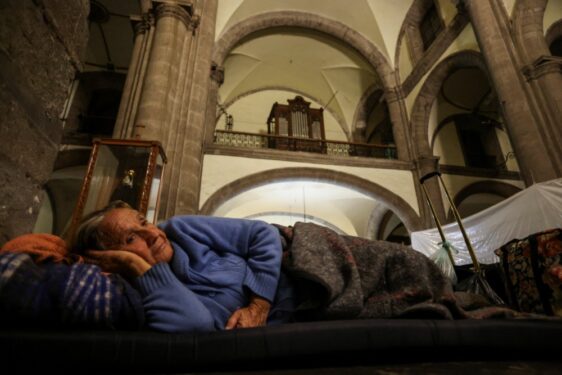
By Kate Scanlon, OSV News
WASHINGTON (OSV News) — In a new report released April 17, Catholic migrant advocates detailed accessibility issues facing asylum-seekers using CBP One, the mobile app run by U.S. Customs and Border Protection to secure appointments needed to claim asylum and legally enter the United States.
Since January 2023, migrants in Mexico have made more than 64.3 million requests for appointments to enter the U.S. using the app since the Biden administration issued rules making it a starting point in the American asylum system at the U.S.-Mexico border, CBS News reported in February. Those requests represent the number of times appointments are requested — not the number of individuals making them — as one person can make multiple appointment requests.
The documents obtained by CBS showed that nearly 450,000 migrants have been allowed into the U.S. under the process in the 13-month period between January 2023 and February 2024.
In a new report by Jesuit Refugee Service USA and Boston College School of Social Work, Catholic migration advocates spoke with those using the app as they waited for an appointment in Mexico to begin the asylum process in the U.S.
The report calls for the federal government to address what it described as inequitable issues still facing the app, such as increasing the number of available appointments per day.
“Currently, the issue that we’re seeing is that there’s a limited amount of appointments per day,” Joshua Utter, advocacy officer at JRS USA, told OSV News. “And we really want the U.S. government — if this is going to be the way to get entry into the U.S to go forward with your asylum claim — they should be more transparent about the process and provide information that’s easily understood for the people that have to use it.”
Utter noted getting an appointment does not equate to being granted asylum; it is merely the first step in the application process.
“They’re trying to take the steps necessary to make sure that they’re entering the country legally,” he said of asylum-seekers trying to use the app.
“The issue we’re seeing is so many people are waiting and waiting for months at a time and it leads to a lot of uncertainty. It has a negative impact on their mental health and well-being, and then it also forces people to take desperate measures to try and get to enter into the U.S.,” Utter said. “And if the U.S. government wants to reduce those irregular crossings, then they should focus on providing, strengthening those pathways that they’re currently encouraging people to use.”
The report also highlighted the logistical challenges to vulnerable migrants presented by use of the app, primarily, having access to a smartphone on which to use it, but also access to wifi and a means of charging a phone. In some cases, migrants seeking asylum in the U.S. came to Mexico with one or two devices among a family group, or had older, outdated phones that did not have 5G capability, or their phones were lost, damaged, or stolen on their journey.
“This need for a smartphone at the border also highlights literacy and digital literacy issues, which are required to navigate CBP One,” the report said. Other risks involved with smartphones along the migration route include misinformation, digital information’s vulnerability to robbers or kidnappers seeking ransom for migrants, unreliable internet access, and digital footprints that can expose locations and identities.
Father Alejandro Olayo-Méndez, a professor at Boston College’s School of Social Work, stressed experiences of violence, such as kidnapping, were common themes faced by those seeking asylum and recounted by those the report surveyed.
“The conditions in which people wait are precarious,” Father Olayo-Méndez told OSV News, adding “the level of violence is very high, the level of violence that people experience. People are really fleeing very complicated situations.”
In one such instance highlighted in the report, a woman identified by the pseudonym Gabriela, a Honduran mother of four children said, “I had the necessary things to live in my country. I had a piece of land, a little house, and a way of living. It was simple but enough. Then the maras (members of a type of gang that originated in the U.S.) threatened to take away or recruit my 15-year-old.”
After the maras failed to recruit her to sell drugs for them, Gabriela said, “one day they approached me and told me, ‘since you could not work with us, maybe your son can work with us. He is a boy, so maybe he will understand better. You have one week to think about it.'”
Gabriela said she did not wait a week: “I left everything and fled to protect my child. I do not want them to take him away or that something may happen to him.”
The report stated that “the journey taken by people seeking safety in the U.S. comes at a great cost.
“Not only leaving behind their homes, livelihoods, and social connections, migrants and asylum-seekers risk dangerous conditions and the threat of violence in order to arrive at a place of refuge and opportunity,” it said. “These challenges are only exacerbated when digital obstacles and misinformation complicate entry and the right to seek asylum in the U.S.”
The report recommended the government continue to improve the CMP One app, and make it more accessible to people who have “limited digital literacy.”
It concluded, “These changes will play a critical role in alleviating humanitarian concerns and improving well-being at the U.S.-Mexico border by reducing the time one must wait in limbo to obtain refuge.”
